Le Chen
Department of Biomedical Engineering, School of Basic Medical Sciences, Central South University, 172 Tongzipo Road, Changsha, 410013, China
AI Assistants to Enhance and Exploit the PETSc Knowledge Base
Jun 25, 2025Abstract:Generative AI, especially through large language models (LLMs), is transforming how technical knowledge can be accessed, reused, and extended. PETSc, a widely used numerical library for high-performance scientific computing, has accumulated a rich but fragmented knowledge base over its three decades of development, spanning source code, documentation, mailing lists, GitLab issues, Discord conversations, technical papers, and more. Much of this knowledge remains informal and inaccessible to users and new developers. To activate and utilize this knowledge base more effectively, the PETSc team has begun building an LLM-powered system that combines PETSc content with custom LLM tools -- including retrieval-augmented generation (RAG), reranking algorithms, and chatbots -- to assist users, support developers, and propose updates to formal documentation. This paper presents initial experiences designing and evaluating these tools, focusing on system architecture, using RAG and reranking for PETSc-specific information, evaluation methodologies for various LLMs and embedding models, and user interface design. Leveraging the Argonne Leadership Computing Facility resources, we analyze how LLM responses can enhance the development and use of numerical software, with an initial focus on scalable Krylov solvers. Our goal is to establish an extensible framework for knowledge-centered AI in scientific software, enabling scalable support, enriched documentation, and enhanced workflows for research and development. We conclude by outlining directions for expanding this system into a robust, evolving platform that advances software ecosystems to accelerate scientific discovery.
Get Experience from Practice: LLM Agents with Record & Replay
May 23, 2025Abstract:AI agents, empowered by Large Language Models (LLMs) and communication protocols such as MCP and A2A, have rapidly evolved from simple chatbots to autonomous entities capable of executing complex, multi-step tasks, demonstrating great potential. However, the LLMs' inherent uncertainty and heavy computational resource requirements pose four significant challenges to the development of safe and efficient agents: reliability, privacy, cost and performance. Existing approaches, like model alignment, workflow constraints and on-device model deployment, can partially alleviate some issues but often with limitations, failing to fundamentally resolve these challenges. This paper proposes a new paradigm called AgentRR (Agent Record & Replay), which introduces the classical record-and-replay mechanism into AI agent frameworks. The core idea is to: 1. Record an agent's interaction trace with its environment and internal decision process during task execution, 2. Summarize this trace into a structured "experience" encapsulating the workflow and constraints, and 3. Replay these experiences in subsequent similar tasks to guide the agent's behavior. We detail a multi-level experience abstraction method and a check function mechanism in AgentRR: the former balances experience specificity and generality, while the latter serves as a trust anchor to ensure completeness and safety during replay. In addition, we explore multiple application modes of AgentRR, including user-recorded task demonstration, large-small model collaboration and privacy-aware agent execution, and envision an experience repository for sharing and reusing knowledge to further reduce deployment cost.
Generalist World Model Pre-Training for Efficient Reinforcement Learning
Feb 26, 2025Abstract:Sample-efficient robot learning is a longstanding goal in robotics. Inspired by the success of scaling in vision and language, the robotics community is now investigating large-scale offline datasets for robot learning. However, existing methods often require expert and/or reward-labeled task-specific data, which can be costly and limit their application in practice. In this paper, we consider a more realistic setting where the offline data consists of reward-free and non-expert multi-embodiment offline data. We show that generalist world model pre-training (WPT), together with retrieval-based experience rehearsal and execution guidance, enables efficient reinforcement learning (RL) and fast task adaptation with such non-curated data. In experiments over 72 visuomotor tasks, spanning 6 different embodiments, covering hard exploration, complex dynamics, and various visual properties, WPT achieves 35.65% and 35% higher aggregated score compared to widely used learning-from-scratch baselines, respectively.
Fortran2CPP: Automating Fortran-to-C++ Migration using LLMs via Multi-Turn Dialogue and Dual-Agent Integration
Dec 27, 2024



Abstract:Migrating Fortran code to C++ is a common task for many scientific computing teams, driven by the need to leverage modern programming paradigms, enhance cross-platform compatibility, and improve maintainability. Automating this translation process using large language models (LLMs) has shown promise, but the lack of high-quality, specialized datasets has hindered their effectiveness. In this paper, we address this challenge by introducing a novel multi-turn dialogue dataset, Fortran2CPP, specifically designed for Fortran-to-C++ code migration. Our dataset, significantly larger than existing alternatives, is generated using a unique LLM-driven, dual-agent pipeline incorporating iterative compilation, execution, and code repair to ensure high quality and functional correctness. To demonstrate the effectiveness of our dataset, we fine-tuned several open-weight LLMs on Fortran2CPP and evaluated their performance on two independent benchmarks. Fine-tuning on our dataset led to remarkable gains, with models achieving up to a 3.31x increase in CodeBLEU score and a 92\% improvement in compilation success rate. This highlights the dataset's ability to enhance both the syntactic accuracy and compilability of the translated C++ code. Our dataset and model have been open-sourced and are available on our public GitHub repository\footnote{\url{https://github.com/HPC-Fortran2CPP/Fortran2Cpp}}.
CodeRosetta: Pushing the Boundaries of Unsupervised Code Translation for Parallel Programming
Oct 27, 2024



Abstract:Recent advancements in Large Language Models (LLMs) have renewed interest in automatic programming language translation. Encoder-decoder transformer models, in particular, have shown promise in translating between different programming languages. However, translating between a language and its high-performance computing (HPC) extensions remains underexplored due to challenges such as complex parallel semantics. In this paper, we introduce CodeRosetta, an encoder-decoder transformer model designed specifically for translating between programming languages and their HPC extensions. CodeRosetta is evaluated on C++ to CUDA and Fortran to C++ translation tasks. It uses a customized learning framework with tailored pretraining and training objectives to effectively capture both code semantics and parallel structural nuances, enabling bidirectional translation. Our results show that CodeRosetta outperforms state-of-the-art baselines in C++ to CUDA translation by 2.9 BLEU and 1.72 CodeBLEU points while improving compilation accuracy by 6.05%. Compared to general closed-source LLMs, our method improves C++ to CUDA translation by 22.08 BLEU and 14.39 CodeBLEU, with 2.75% higher compilation accuracy. Finally, CodeRosetta exhibits proficiency in Fortran to parallel C++ translation, marking it, to our knowledge, as the first encoder-decoder model for this complex task, improving CodeBLEU by at least 4.63 points compared to closed-source and open-code LLMs.
RP1M: A Large-Scale Motion Dataset for Piano Playing with Bi-Manual Dexterous Robot Hands
Aug 20, 2024



Abstract:It has been a long-standing research goal to endow robot hands with human-level dexterity. Bi-manual robot piano playing constitutes a task that combines challenges from dynamic tasks, such as generating fast while precise motions, with slower but contact-rich manipulation problems. Although reinforcement learning based approaches have shown promising results in single-task performance, these methods struggle in a multi-song setting. Our work aims to close this gap and, thereby, enable imitation learning approaches for robot piano playing at scale. To this end, we introduce the Robot Piano 1 Million (RP1M) dataset, containing bi-manual robot piano playing motion data of more than one million trajectories. We formulate finger placements as an optimal transport problem, thus, enabling automatic annotation of vast amounts of unlabeled songs. Benchmarking existing imitation learning approaches shows that such approaches reach state-of-the-art robot piano playing performance by leveraging RP1M.
PowerInfer-2: Fast Large Language Model Inference on a Smartphone
Jun 12, 2024



Abstract:This paper introduces PowerInfer-2, a framework designed for high-speed inference of Large Language Models (LLMs) on smartphones, particularly effective for models whose sizes exceed the device's memory capacity. The key insight of PowerInfer-2 is to utilize the heterogeneous computation, memory, and I/O resources in smartphones by decomposing traditional matrix computations into fine-grained neuron cluster computations. Specifically, PowerInfer-2 features a polymorphic neuron engine that adapts computational strategies for various stages of LLM inference. Additionally, it introduces segmented neuron caching and fine-grained neuron-cluster-level pipelining, which effectively minimize and conceal the overhead caused by I/O operations. The implementation and evaluation of PowerInfer-2 demonstrate its capability to support a wide array of LLM models on two smartphones, achieving up to a 29.2x speed increase compared with state-of-the-art frameworks. Notably, PowerInfer-2 is the first system to serve the TurboSparse-Mixtral-47B model with a generation rate of 11.68 tokens per second on a smartphone. For models that fit entirely within the memory, PowerInfer-2 can achieve approximately a 40% reduction in memory usage while maintaining inference speeds comparable to llama.cpp and MLC-LLM. For more details, including a demonstration video, please visit the project site at www.powerinfer.ai/v2.
GuLu XuanYuan , a biomimetic Transformer that intergrates humanoid MIP, reptile UGV, and bird UAV
Apr 15, 2024Abstract:This article proposes a multi habitat bio-mimetic robot, named as GuLu XuanYuan.It combines all common types of mobile robots, namely humanoid MIP, unmanned ground vehicle, and unmanned aerial vehicle. These 3 modals imitate human, bird, and reptile, separately. As a transformer, GuLu XuanYuan can transform from one modal to another. Transforming function integrates the specialized abilities of three robots into the same machine body. This simplification approach helps to reduce the total number of required robots. From another perspective, the deformation function is equivalent to creating more economic value.
GaussianFlow: Splatting Gaussian Dynamics for 4D Content Creation
Mar 19, 2024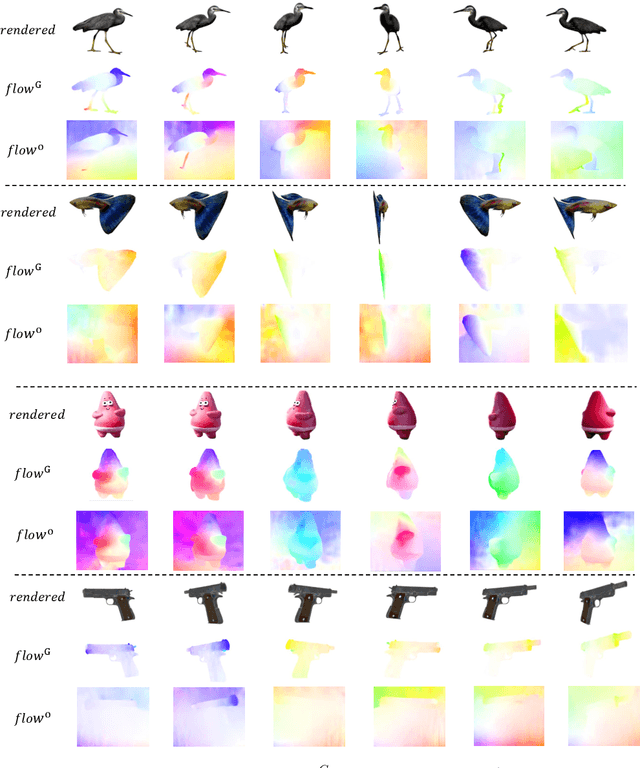
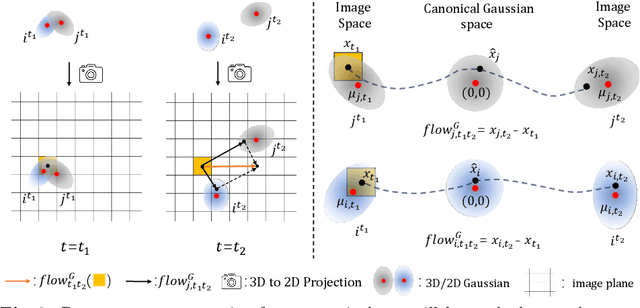
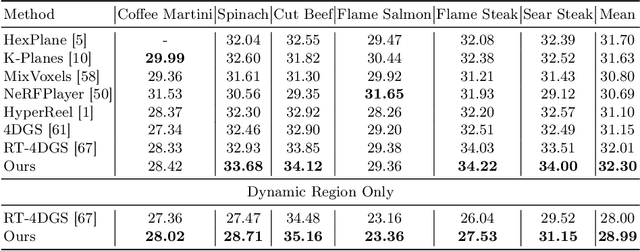
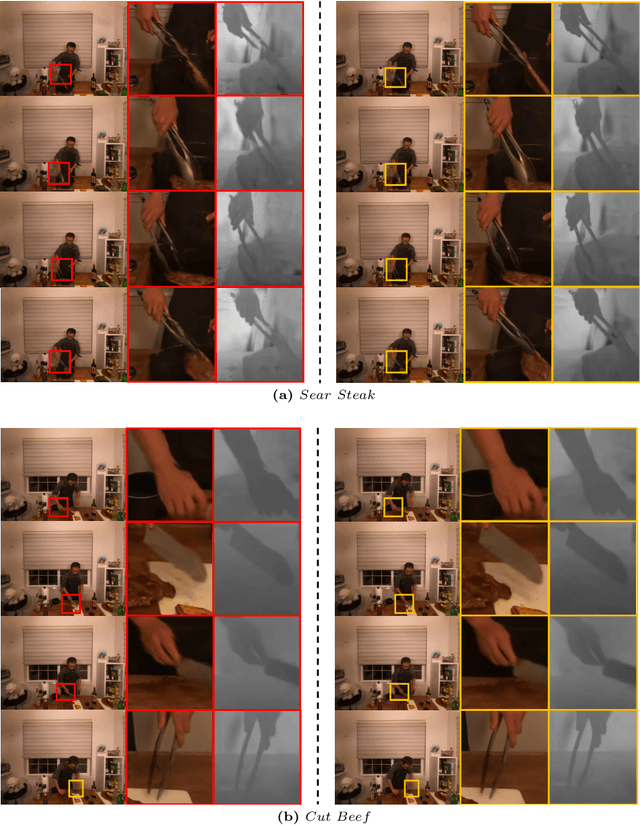
Abstract:Creating 4D fields of Gaussian Splatting from images or videos is a challenging task due to its under-constrained nature. While the optimization can draw photometric reference from the input videos or be regulated by generative models, directly supervising Gaussian motions remains underexplored. In this paper, we introduce a novel concept, Gaussian flow, which connects the dynamics of 3D Gaussians and pixel velocities between consecutive frames. The Gaussian flow can be efficiently obtained by splatting Gaussian dynamics into the image space. This differentiable process enables direct dynamic supervision from optical flow. Our method significantly benefits 4D dynamic content generation and 4D novel view synthesis with Gaussian Splatting, especially for contents with rich motions that are hard to be handled by existing methods. The common color drifting issue that happens in 4D generation is also resolved with improved Guassian dynamics. Superior visual quality on extensive experiments demonstrates our method's effectiveness. Quantitative and qualitative evaluations show that our method achieves state-of-the-art results on both tasks of 4D generation and 4D novel view synthesis. Project page: https://zerg-overmind.github.io/GaussianFlow.github.io/
The Landscape and Challenges of HPC Research and LLMs
Feb 07, 2024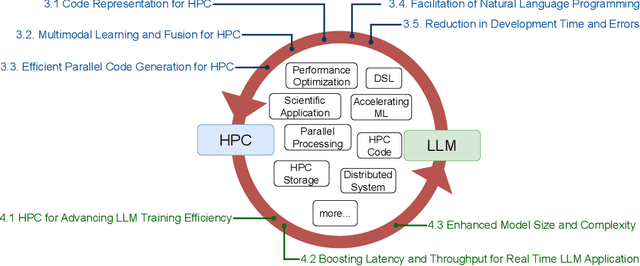
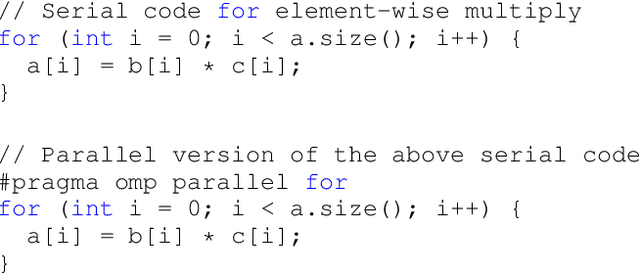
Abstract:Recently, language models (LMs), especially large language models (LLMs), have revolutionized the field of deep learning. Both encoder-decoder models and prompt-based techniques have shown immense potential for natural language processing and code-based tasks. Over the past several years, many research labs and institutions have invested heavily in high-performance computing, approaching or breaching exascale performance levels. In this paper, we posit that adapting and utilizing such language model-based techniques for tasks in high-performance computing (HPC) would be very beneficial. This study presents our reasoning behind the aforementioned position and highlights how existing ideas can be improved and adapted for HPC tasks.
 Add to Chrome
Add to Chrome Add to Firefox
Add to Firefox Add to Edge
Add to Edge